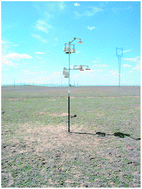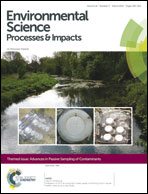A review of passive sampling systems for ambient air mercury measurements†
Abstract
Atmospheric mercury (Hg) temporal and spatial patterns must be measured accurately in order to adequately understand the role of this pathway as it relates to Hg toxicity and exposure of humans and wildlife to Hg. It is also important to understand the distribution of the different chemical forms (elemental, oxidized, or particle bound) and specific compounds in air (e.g., HgCl2, HgBr2, HgO, Hg(NO3)2, and HgSO4). However, the current automated and passive sampling methods of measurement have limitations and artifacts impacting our ability to achieve this task. Both abiotic and biotic systems have been developed to measure the total gaseous Hg and oxidized Hg compounds (concentration and deposition). This study reviews and compares the performance of previously and currently applied passive sampling systems. Computable fluid dynamic modeling was conducted to gain additional understanding of a gaseous oxidized Hg (GOM) passive sampler. Case studies during which passive samplers were used are also presented to demonstrate the ability of passive samplers to capture atmospheric Hg variation. A network using passive samplers would be useful for monitoring global Hg trends due to the limits of the current automated method.

- This article is part of the themed collection: Advances in Passive Sampling of Contaminants

 Please wait while we load your content...
Please wait while we load your content...